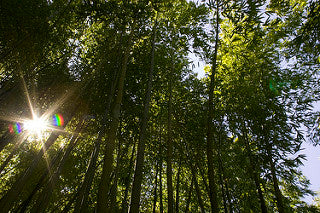How Can I Get My Bamboo To Grow Faster?
By nature, bamboo is one of the fastest-growing plants in the world. Typically, most varieties can reach full maturity within just a few years with the proper nutrition and care. However, if you’re looking to give your bamboo the extra boost that it needs to explode with growth, then there are a couple of things that you should know.

First of all, the growth rate of these fast-growing plants is largely dependent on their environment, such as soil, nutrients, water and sun. In order to ensure maximum growth, you should first ensure that all of the plant’s nutritional needs are being met before adding additional amendments.
The Basics
Watering
Before you can successfully boost your bamboo’s growth, you must first ensure that it’s nutritional and water requirements are being met. Bamboos are very thirsty plants and should be watered regularly or provided with irrigation for at least the first year or two. Afterwards, they quickly adapt to their surroundings and should only require additional water during times of drought or severe heat.
Soil
This versatile plant has been known to grow in a wide variety of soil types, however, it prefers well-drained, loamy and slightly acidic soil. Bamboo typically reaches maximum growth rates in soil that is well-aerated, light and organically rich. By ensuring that your bamboo is planted in the appropriate soil, you are already on your way to having thriving plants. A couple of ways to ensure that your bamboo’s soil is well-drained is by adding gravel, sand or mulch to ensure that water does not become trapped around the roots.
In addition, we also recommend Recharge Soil Conditioner for Bamboo. Recharge is a natural and organically based soil conditioner that provides the natural plant nutrients and microbes used by bamboo. Loaded with bio-stimulants, kelp (which is a sustainable form of potassium), amino acids and more.
Feeding
Bamboo plants are known for being very hungry plants and greedy eaters. Of course, this is also what helps them as the fastest growing plants in the world. Since bamboo is a relative of the grass family (Poaceae), they thrive well when provided with plenty of silica, nitrogen and potassium, in addition to a few other nutrients. For the most part, bamboo is not a very salt tolerant plant. That is, aside from Seabreeze Bamboo, which is slightly more salt tolerant than others and more suited for coastal regions.
While it is not necessarily required that you fertilize your bamboo, it has been found to deliver the best growth results when an organic fertilizer is used. Here at the Bamboo Plants Online farm and nursery, we use Bamboo Special. Bamboo Special is an organic, environmentally-friendly, slow-release, high nitrogen fertilizer that only needs to be applied annually. It is generally recommended that you apply an organic fertilizer during mid-spring, in order to allow your bamboo plants to absorb plenty of nutrients right before the shooting season begins around May.
Mulching
The unique properties of bamboo, as a woody grass with rhizomes that determine the growth of new shoots, makes mulching a necessity. In fact, bamboo plants even create a bit of their own mulch by dropped their leaves around their roots, where they provide a useful source of nutrients (such as silica and nitrogen).
Sawdust, chipped wood, compost, manure, leaf mulch and bark are all acceptable mulch materials for bamboo. In addition to providing nutrients, they also serve to protect the rhizomes, much like insulation. During drought, severe heat and winter, mulching can prevent the plant from losing moisture or getting too cold. Typically, container bamboo doesn’t require very much mulch. However, in-ground bamboo should have between 2 and 6 inches of mulch.
Pruning
Finally, pruning or trimming back your bamboo can actually be used as a means for encouraging rapid growth. There are 2 methods for trimming clumping bamboo in order to encourage growth. The first is an annual trimming of older and dead culms, which allows the plant to conserve more energy for producing new shoots. Second, many bamboos require an annual pruning in order to look its best, which also serves the purpose of diverting the plant’s energy into producing more root growth and new shoots.



